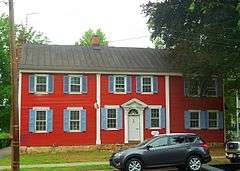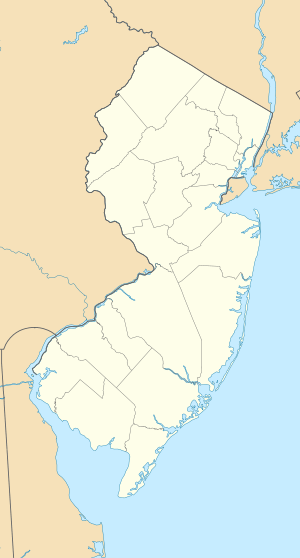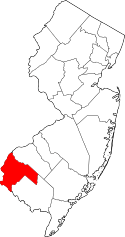Joseph Shinn House
|
Joseph Shinn House | |
 | |
   | |
| Location | 68 North Main Street, Woodstown, New Jersey |
|---|---|
| Coordinates | 39°39′14″N 75°19′46″W / 39.65389°N 75.32944°WCoordinates: 39°39′14″N 75°19′46″W / 39.65389°N 75.32944°W |
| Area | 0.3 acres (0.12 ha) |
| Built | 1742 |
| Architectural style | Georgian |
| NRHP Reference # | 79001518[1] |
| NJRHP # | 2454[2] |
| Significant dates | |
| Added to NRHP | March 7, 1979 |
| Designated NJRHP | August 2, 1978 |
Joseph Shinn House is located in Woodstown, Salem County, New Jersey, United States. The house was built in 1742 and was added to the National Register of Historic Places on March 7, 1979.
History
The house was built by Samuel Shivers in 1743, and then inherited by his son-in-law Joseph Shinn. The northern third of the house was built in 1812.
Shinn was a member the fifth session (June–August 1776) of the Provincial Congress of New Jersey which ordered the arrest of the colony's last royal governor William Franklin, approved the Declaration of Independence and wrote New Jersey's first state constitution (1776).
Joseph's son, General of the New Jersey militia Isaiah Shinn, later owned the house, but built another house across the street in 1790. Both of these houses are located in the local Woodstown Historic District along with another nearby house, the William Shinn House.[3] Isaiah's grandson, painter Everett Shinn was raised in Woodstown but never lived in the Joseph Shinn House.
See also
References
- ↑ National Park Service (2009-03-13). "National Register Information System". National Register of Historic Places. National Park Service.
- ↑ "New Jersey and National Registers of Historic Places - Salem County" (PDF). New Jersey Department of Environmental Protection - Historic Preservation Office. April 1, 2010. p. 3. Retrieved June 16, 2010.
- ↑ "Walking Tour, The Historic District, Woodstown NJ" (PDF). Woodstown Historic Preservation District. Retrieved July 7, 2016.
